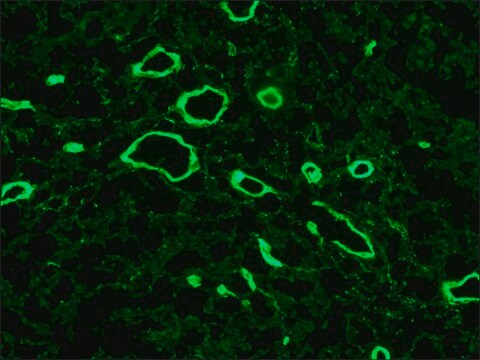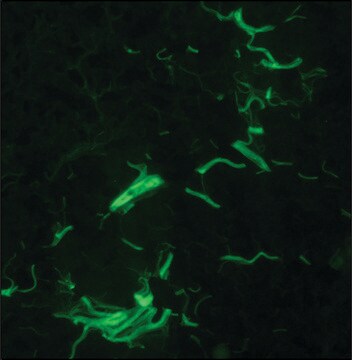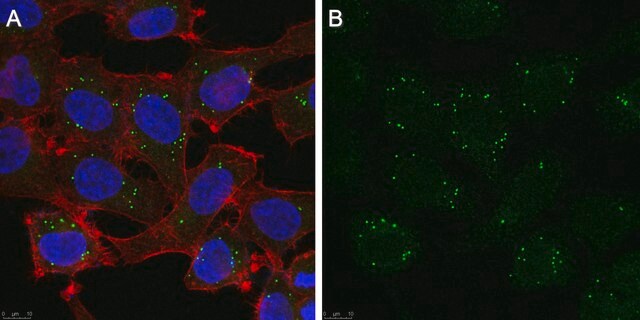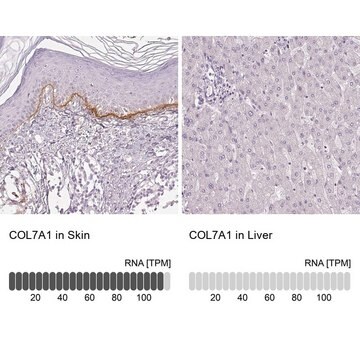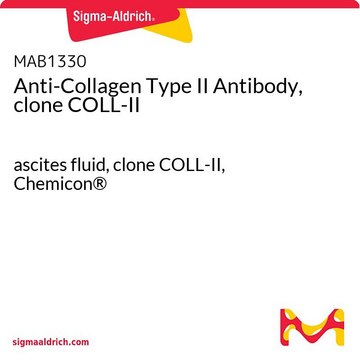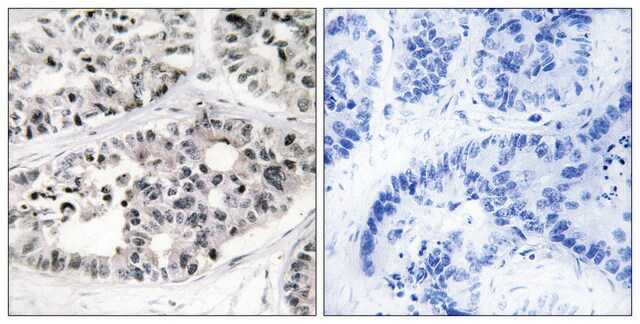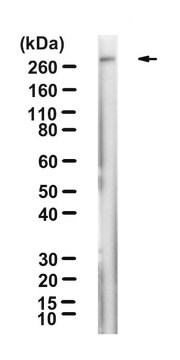SAB4200686
Anti-Collagen, Type VII antibody, Mouse monoclonal
clone LH7.2, purified from hybridoma cell culture
Sinónimos:
Monoclonal Anti-Collagen, Type VII antibody produced in mouse, COL7A1, EBD1, EBDCT, EBR1, alpha 1, collagen, type VII
About This Item
Productos recomendados
origen biológico
mouse
Nivel de calidad
forma del anticuerpo
purified immunoglobulin
tipo de anticuerpo
primary antibodies
clon
LH7.2, monoclonal
formulario
buffered aqueous solution
reactividad de especies
human
envase
antibody small pack of 25 μL
concentración
~1 mg/mL
técnicas
immunoblotting: suitable
immunohistochemistry: 1.5-3 μg/mL using frozen human tonsil sections
isotipo
IgG1
Condiciones de envío
dry ice
temp. de almacenamiento
−20°C
modificación del objetivo postraduccional
unmodified
Información sobre el gen
human ... COL7A1(1294)
Descripción general
Inmunógeno
Aplicación
- enzyme-linked immunosorbent assay (ELISA)
- immunoblotting
- immunohistochemistry
- immunofluorescence
Acciones bioquímicas o fisiológicas
Forma física
Cláusula de descargo de responsabilidad
Not finding the right product?
Try our Herramienta de selección de productos.
Código de clase de almacenamiento
12 - Non Combustible Liquids
Clase de riesgo para el agua (WGK)
nwg
Punto de inflamabilidad (°F)
Not applicable
Punto de inflamabilidad (°C)
Not applicable
Certificados de análisis (COA)
Busque Certificados de análisis (COA) introduciendo el número de lote del producto. Los números de lote se encuentran en la etiqueta del producto después de las palabras «Lot» o «Batch»
¿Ya tiene este producto?
Encuentre la documentación para los productos que ha comprado recientemente en la Biblioteca de documentos.
Nuestro equipo de científicos tiene experiencia en todas las áreas de investigación: Ciencias de la vida, Ciencia de los materiales, Síntesis química, Cromatografía, Analítica y muchas otras.
Póngase en contacto con el Servicio técnico